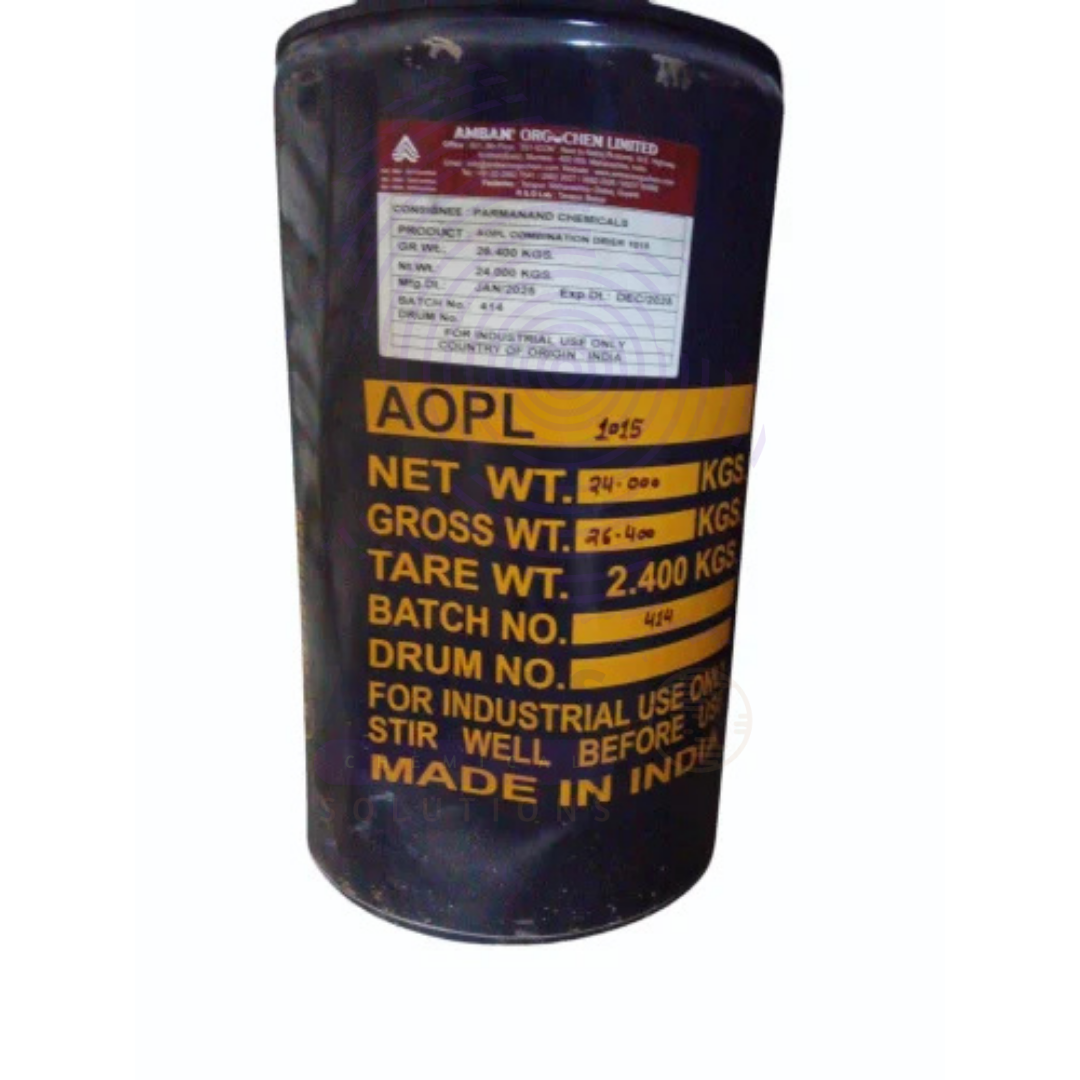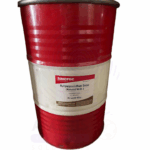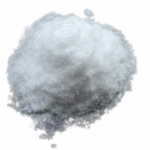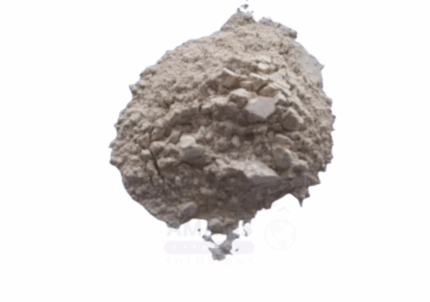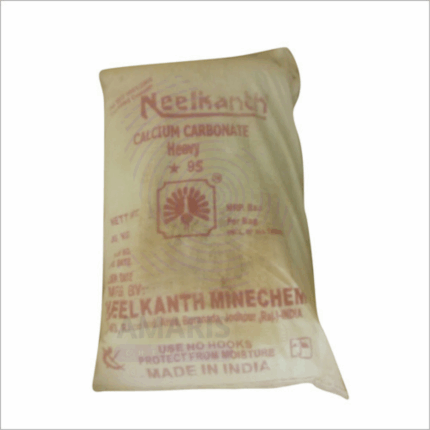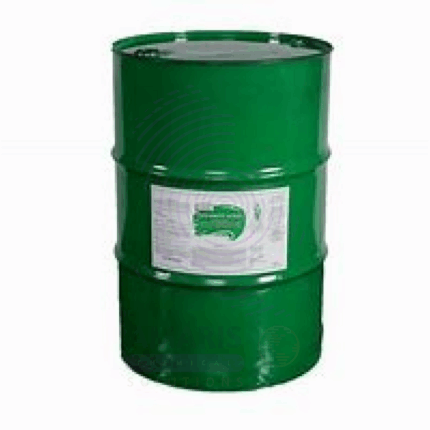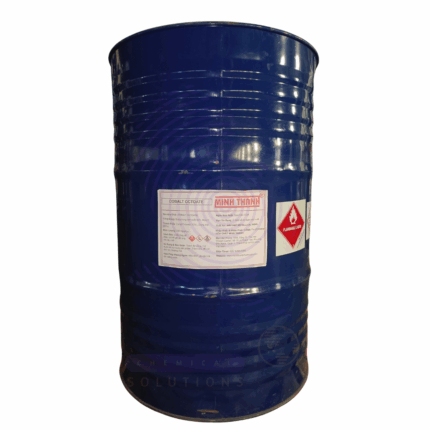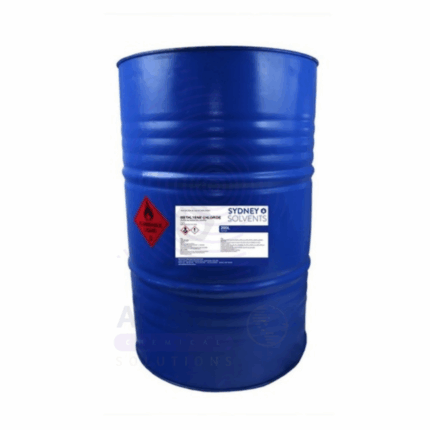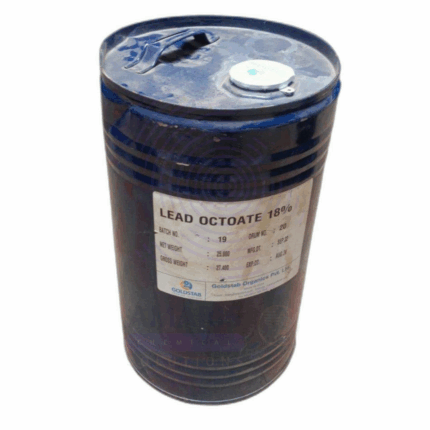Cobalt Drier
Whatsapp Order
Cobalt Drier is a metal-based drying agent primarily composed of cobalt salts (commonly cobalt octoate or cobalt naphthenate). It is widely used as a catalyst to accelerate the drying (oxidative curing) of oils, alkyd resins, and varnishes in coatings and paints. This drier promotes polymerization and cross-linking of unsaturated fatty acids in drying oils upon exposure to air, significantly reducing drying times and improving film hardness and durability. Cobalt driers are essential additives in industrial, decorative, and automotive coatings due to their effectiveness at low concentrations and compatibility with various resin systems.
Category: Driers
Tags: Cobalt drier, Cobalt octoate, Paint drier additive, Paints and coatings, Violet to dark purple liquid
Description
Table of Contents
Toggle
Cobalt Drier
Primary Uses
- Paints, Coatings & Varnishes
- Used as a catalyst (drying agent) in oil-based paints, alkyd resins, enamels, lacquers, and varnishes.
- Accelerates the oxidative polymerization of drying oils like linseed oil, tung oil, and soya oil.
- Enhances drying speed, film hardness, and gloss of coatings.
- Improves overall performance and durability of protective and decorative finishes.
- Printing Inks
- Incorporated in oxidative drying printing inks to speed up drying on paper, metal, and plastic substrates.
- Helps achieve rapid tack-free films and improved adhesion.
- Adhesives & Sealants
- Used in adhesive formulations where drying and curing of unsaturated oils or resins are required.
- Ensures quick set times and strong bonding properties.
Secondary Uses
- Wood Finishing
- Utilized in wood stains, lacquers, and oils to accelerate drying, improve penetration, and enhance surface protection.
- Polymer & Resin Chemistry
- Acts as a catalyst in the cross-linking reactions of certain polymers and resins beyond coatings.
- Artistic & Specialty Applications
- Employed in fine arts for oil painting mediums to reduce drying times without affecting color or finish.
- Metal Treatments
- Occasionally used in specialty metal drying formulations to promote quicker cure of protective coatings.
PRODUCT KEY FEATURES
1. Basic Identification Attributes
- Chemical Name (IUPAC): Cobalt(II) 2-ethylhexanoate or Cobalt(II) naphthenate (depending on product)
- Common/Trade Name: Cobalt Drier, Cobalt Octoate, Cobalt Naphthenate
- CAS Number:
- Cobalt(II) 2-ethylhexanoate: 136-52-7
- Cobalt naphthenate: 64742-52-5 (varies with preparation)
- HS Code: 2915.70.00
- Molecular Formula: Variable – complex cobalt salts dissolved in oil solvents
- Synonyms:
- Cobalt drying agent
- Cobalt octoate
- Cobalt naphthenate
2. Physical & Chemical Properties
- Physical State: Viscous oily liquid or solution
- Color & Odor: Dark amber to reddish-brown; characteristic solvent odor
- Melting/Freezing Point: Not applicable (liquid at room temperature)
- Boiling Point: Approx. 230–270°C (solvent dependent)
- Density: ~1.0–1.1 g/cm³
- Solubility:
- Soluble in oils, organic solvents (aromatic hydrocarbons, ketones)
- Insoluble in water
- Stability: Stable under normal conditions; sensitive to strong acids and bases
3. Safety & Hazard Attributes
- Hazard Class (GHS):
- Harmful if swallowed or inhaled
- Skin and respiratory sensitizer
- May cause allergic skin reactions
- Toxic to aquatic life with long-lasting effects
- NFPA Ratings:
- Health: 2
- Flammability: 2
- Reactivity: 0
- Exposure Limits: No specific OSHA PEL; cobalt metal and compounds generally limited to 0.1 mg/m³ (TWA)
- Toxicity: May cause skin and respiratory sensitization; chronic exposure can affect lungs and cause cobalt-related health effects
- Reactivity: Stable; avoid strong oxidizers and acids
4. Storage & Handling Attributes
- Storage Conditions: Store in tightly closed containers in a cool, dry, well-ventilated area away from heat and ignition sources
- Container Type: Metal or plastic drums with secure sealing
- Shelf Life: Typically 1–2 years if stored properly
- Special Handling:
- Use explosion-proof equipment and grounding due to flammable solvents
- Avoid skin and eye contact; use adequate ventilation
5. Regulatory & Compliance Attributes
- FDA Status: Not approved for food or pharmaceutical use
- REACH Status: Registered as a cobalt compound under EU regulations
- Transportation: Classified as flammable liquid (depending on solvent) and hazardous for transport
- Waste Disposal: Dispose of as hazardous waste in accordance with local regulations
6. Environmental & Health Impact
- Ecotoxicity: Toxic to aquatic organisms; avoid release to environment
- Persistence: May persist in soils and sediments due to cobalt content
- Bioaccumulation: Low potential
- Carcinogenicity/Mutagenicity: Cobalt compounds are classified as possible carcinogens (IARC Group 2B)
- Biodegradability: Organic carrier solvents may biodegrade; cobalt itself is an element and does not degrade
SAFETY HANDLING PRECAUTIONS
Safety Handling Precautions
Personal Protective Equipment (PPE):
- Chemical-resistant gloves
- Safety goggles or face shield
- Respirator (if ventilation is inadequate)
- Protective clothing
Handling Measures:
- Avoid inhalation of vapors and contact with skin or eyes
- Use in well-ventilated areas or fume hoods
- Prevent release into environment
Storage Measures:
- Store away from heat, sparks, and open flames
- Keep container tightly closed
- Use grounding and bonding during transfer to avoid static discharge
Hygiene Practices:
- Wash hands thoroughly after handling
- Do not eat, drink, or smoke in work areas
First Aid Measures
- Inhalation: Move victim to fresh air; if breathing difficulties occur, seek medical attention
- Skin Contact: Wash affected area with soap and water; seek medical advice if irritation or allergic reaction develops
- Eye Contact: Rinse immediately with plenty of water for at least 15 minutes; seek medical attention
- Ingestion: Do not induce vomiting; seek immediate medical assistance
Firefighting Measures
- Fire Hazards: Flammable due to solvent content; cobalt salts themselves are not combustible but may decompose on heating
- Extinguishing Media: Use foam, dry chemical, carbon dioxide (CO₂)
- Special Precautions: Firefighters should wear self-contained breathing apparatus and protective gear
- Decomposition Products: May release cobalt oxides, carbon monoxide, carbon dioxide, and solvent vapors
Related products
Acrytan SN
Calcium Carbonate Heavy
Calcium Carbonate Heavy is a high-density, finely ground, natural mineral primarily composed of calcium carbonate (CaCO₃). Known for its higher bulk density compared to regular grades, this filler is widely used in applications requiring enhanced weight, opacity, and strength. It is commonly employed as a functional filler and extender in industries such as plastics, paints, coatings, adhesives, rubber, paper, and construction materials. Its inert nature, whiteness, and particle size distribution make it suitable for improving mechanical properties and surface finish, while also offering cost efficiency by replacing more expensive raw materials.
Cellulose Ether
Cellulose ether refers to a group of chemically modified cellulose derivatives where hydroxyl groups on the cellulose backbone are substituted with ether groups such as methyl, hydroxyethyl, or carboxymethyl groups. These modifications improve solubility, viscosity, and film-forming properties while maintaining biodegradability and non-toxicity. Cellulose ethers are white to off-white powders or granules that dissolve in water to form viscous, stable solutions. They are widely used as thickeners, binders, stabilizers, and film formers in industries such as construction, pharmaceuticals, cosmetics, food, and paper.
Clear Emulsion
Clear Emulsion is a transparent or translucent mixture of two immiscible liquids—typically oil and water—stabilized by emulsifying agents to form a stable, homogenous system. This product is widely used in cosmetics and personal care, pharmaceuticals, and specialty industrial applications due to its lightweight texture, ease of absorption, and aesthetic appeal. Clear emulsions offer a visually appealing, non-greasy feel with the advantages of both oil and water phases, delivering moisturizing, protective, and active ingredient-carrying benefits. Their clarity distinguishes them from traditional creamy emulsions, making them popular in modern skincare and cosmetic formulations.
Cobalt Octoate
Cobalt Octoate is a liquid metal drying agent solution consisting of 10% cobalt octoate dissolved in an organic solvent carrier (typically mineral spirits or similar hydrocarbon solvent). It functions as a highly efficient catalyst to accelerate the oxidative curing and drying of alkyd resins, oils, and varnishes in coatings and paints. By promoting cross-linking and polymerization of unsaturated fatty acids in drying oils upon exposure to oxygen, it significantly reduces drying time and enhances film hardness, gloss, and durability. Cobalt Octoate 10% is widely used in industrial and decorative coatings, inks, and adhesives, valued for its strong catalytic activity even at low concentrations.
Dichloromethane
$ 2.21
Dichloromethane, also known as methylene chloride, is a volatile, colorless liquid with a sweet, chloroform-like odor. It is a chlorinated solvent widely used in industrial, pharmaceutical, and laboratory applications due to its excellent solvent properties, including high volatility, moderate polarity, and low boiling point (about 39.6°C). DCM is prized for its ability to dissolve a wide range of organic compounds, making it ideal for extraction, paint stripping, degreasing, and chemical processing. However, due to health and environmental concerns, its use is regulated and controlled in many countries.
Lead Octoate
Lead Octoate is a viscous liquid solution containing 30% lead octoate, a metal soap derived from lead and 2-ethylhexanoic acid (also known as octanoic acid). It is primarily used as a drying agent (drier) in paints, varnishes, and coatings to accelerate the curing process by promoting oxidation and polymerization of drying oils. This product is widely employed in industrial coatings to improve drying times, hardness, and durability of surface films. Packaged typically in 250kg drums, Lead Octoate 30% is handled with care due to the toxic nature of lead compounds.
Zinc Octoate
Zinc Octoate is a metal carboxylate solution containing approximately 10% zinc content, derived from zinc and 2-ethylhexanoic acid (octoic acid). It functions as an effective curing agent, catalyst, and crosslinker in various polymer systems such as paints, coatings, adhesives, and rubber compounds. This compound improves film hardness, drying times, and overall durability of finished products, making it widely used in industrial and manufacturing processes.


 Preservatives(food)
Preservatives(food) Flavor Enhancers
Flavor Enhancers Acidulants
Acidulants Sweeteners
Sweeteners Antioxidants
Antioxidants Colorants(food)
Colorants(food) Nutraceutical Ingredients (food)
Nutraceutical Ingredients (food) Nutrient Supplements
Nutrient Supplements Emulsifiers
Emulsifiers
 Collectors
Collectors Dust Suppressants
Dust Suppressants Explosives and Blasting Agents
Explosives and Blasting Agents Flocculants and Coagulants
Flocculants and Coagulants Frothers
Frothers Leaching Agents
Leaching Agents pH Modifiers
pH Modifiers Precious Metal Extraction Agents
Precious Metal Extraction Agents
 Antioxidants(plastic)
Antioxidants(plastic) Colorants (Pigments, Dyes)
Colorants (Pigments, Dyes) Fillers and Reinforcements
Fillers and Reinforcements Flame Retardants
Flame Retardants Monomers
Monomers Plasticizers
Plasticizers Polymerization Initiators
Polymerization Initiators Stabilizers (UV, Heat)
Stabilizers (UV, Heat)
 Antifoaming Agents
Antifoaming Agents Chelating Agents
Chelating Agents Coagulants and Flocculants
Coagulants and Flocculants Corrosion Inhibitors
Corrosion Inhibitors Disinfectants and Biocides
Disinfectants and Biocides Oxidizing Agents
Oxidizing Agents pH Adjusters
pH Adjusters Scale Inhibitors( water)
Scale Inhibitors( water)
 Antioxidants(cosmetic)
Antioxidants(cosmetic) Emollients
Emollients Fragrances and Essential Oils
Fragrances and Essential Oils Humectants
Humectants Preservatives
Preservatives Surfactants(cosmetic)
Surfactants(cosmetic) Thickeners
Thickeners UV Filters
UV Filters
 Fertilizers
Fertilizers Soil Conditioners
Soil Conditioners Plant Growth Regulators
Plant Growth Regulators Animal Feed Additives
Animal Feed Additives Biostimulants
Biostimulants Pesticides (Herbicides, Insecticides, Fungicides)
Pesticides (Herbicides, Insecticides, Fungicides)
 Active Pharmaceutical Ingredients (APIs)
Active Pharmaceutical Ingredients (APIs) Excipients
Excipients Solvents(pharmaceutical)
Solvents(pharmaceutical) Antibiotics
Antibiotics Antiseptics and Disinfectants
Antiseptics and Disinfectants Vaccine Adjuvants
Vaccine Adjuvants Nutraceutical Ingredients (pharmaceutical)
Nutraceutical Ingredients (pharmaceutical) Analgesics & Antipyretics
Analgesics & Antipyretics
 Analytical Reagents
Analytical Reagents Solvents(lab)
Solvents(lab) Chromatography Chemicals
Chromatography Chemicals Spectroscopy Reagents
Spectroscopy Reagents microbiology-and-cell-culture-reagents
microbiology-and-cell-culture-reagents Molecular Biology Reagents
Molecular Biology Reagents Biochemical Reagents
Biochemical Reagents Inorganic and Organic Standards
Inorganic and Organic Standards Laboratory Safety Chemicals
Laboratory Safety Chemicals Specialty Laboratory Chemicals(Special Laboratory Equipment)
Specialty Laboratory Chemicals(Special Laboratory Equipment)
 Demulsifiers
Demulsifiers Hydraulic Fracturing Fluids
Hydraulic Fracturing Fluids Scale Inhibitors(oil)
Scale Inhibitors(oil) Surfactants(oil)
Surfactants(oil) Drilling Fluids
Drilling Fluids
 Dyes and Pigments
Dyes and Pigments Bleaching Agents
Bleaching Agents Softening Agents
Softening Agents Finishing Agents
Finishing Agents Antistatic Agents
Antistatic Agents
 Admixtures
Admixtures Waterproofing Agents
Waterproofing Agents Sealants and Adhesives
Sealants and Adhesives Curing Compounds
Curing Compounds Concrete Repair Chemicals
Concrete Repair Chemicals Anti-Corrosion Coatings
Anti-Corrosion Coatings
 Surfactants(cleaning)
Surfactants(cleaning) Builders
Builders Enzymes
Enzymes Solvents (Cleaning)
Solvents (Cleaning) Fragrances
Fragrances
 Electronic Chemicals
Electronic Chemicals Catalysts
Catalysts Lubricants
Lubricants Photographic Chemicals
Photographic Chemicals Refrigerants
Refrigerants Automotive chemicals
Automotive chemicals Pyrotechnic Chemicals
Pyrotechnic Chemicals
 Biodegradable Surfactants
Biodegradable Surfactants Bio-based Solvents
Bio-based Solvents Renewable Polymers
Renewable Polymers Carbon Capture Chemicals
Carbon Capture Chemicals Wastewater Treatment Chemicals
Wastewater Treatment Chemicals
 Pigments
Pigments Solvents(paint)
Solvents(paint) Specialty Coatings
Specialty Coatings Binders/Resins
Binders/Resins Additives
Additives Driers
Driers Anti-Corrosion Agents
Anti-Corrosion Agents Functional Coatings
Functional Coatings Application-Specific Coatings
Application-Specific Coatings
 Fresh Herbs
Fresh Herbs Ground Spices
Ground Spices Whole Spices
Whole Spices Spice Blends
Spice Blends Dried Herbs
Dried Herbs
 Leavening Agents
Leavening Agents Dough Conditioners
Dough Conditioners Flour Treatments
Flour Treatments Fat Replacers
Fat Replacers Decoratives
Decoratives Preservatives(baking)
Preservatives(baking)
 Plasticizers & Softeners
Plasticizers & Softeners Reinforcing Agents
Reinforcing Agents Adhesion Promoters
Adhesion Promoters Vulcanizing Agents
Vulcanizing Agents Antidegradants
Antidegradants Blowing Agents
Blowing Agents Fillers & Extenders
Fillers & Extenders Accelerators & Retarders
Accelerators & Retarders